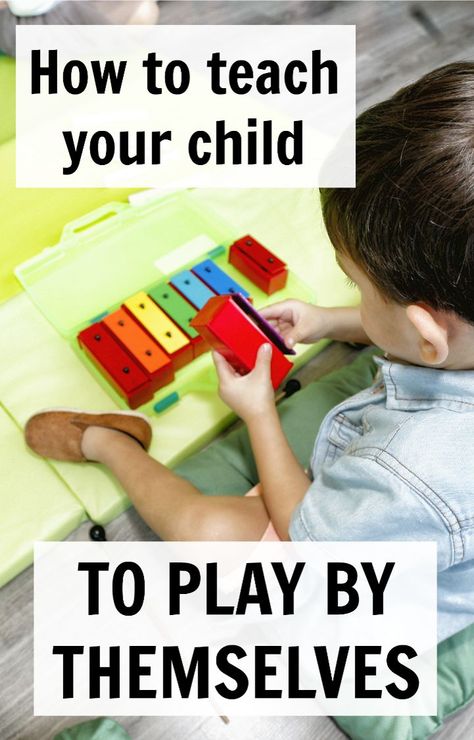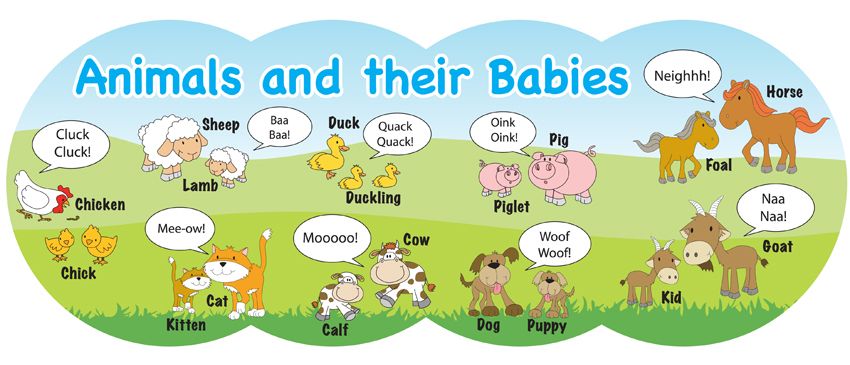How to play with your child at home
Special Playtime | Communicating with Your Child | Essentials | Parenting Information
Special playtime is a chance for you to focus on your child’s good behaviors and build a strong, nurturing relationship. You can use the time to actively listen and practice praising, imitating, and describing your child’s behavior. The more you practice the skills, the easier it is to use them in everyday situations.
Toys and Activities for Special Playtime
- Use toys or activities that encourage your child to be creative. Blocks, crayons, and paper are some toys and supplies that allow your child to use his imagination. If a toy moves and plays by itself, it is probably not a good idea to use it during special playtime.
- Use toys and activities that are safe for your child’s age. Child scissors, plastic pots and pans, and large plastic blocks are good choices for young children. Avoid toys with small detachable parts for very young children.
- Use toys and activities that are at the right skill level for your child. With young children, you may want to use larger blocks because they are easier for younger children to hold and put together.
- Make sure you have enough toys so you can play with your child. For example, you might want to have two dolls or trucks for special playtime so that you can easily imitate your child’s behavior.
Tips for Special Playtime
Try to spend at least 5-10 minutes each day playing with your child.
Begin with at least five minutes of special playtime. When parents first start using praise, description, imitation, and active listening, they find that it takes a lot of energy and focus. It is hard to use the skills for more than five minutes. You can increase the amount of time you spend with your child in special playtime as your skill level improves. Other positive time with your child in addition to the special playtime is always good for you and your child.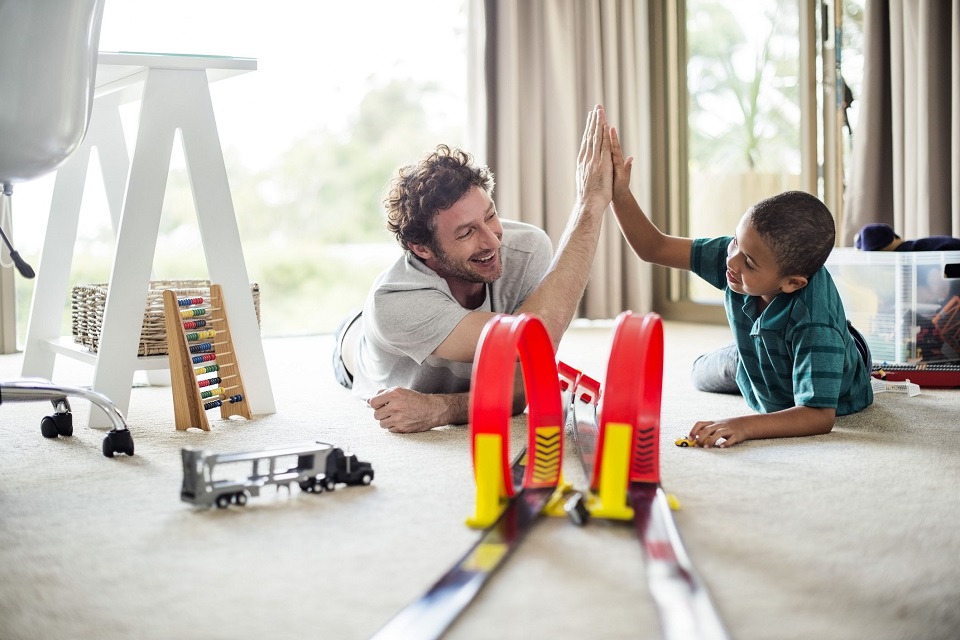 For instance, reading before bed or cuddling when watching a favorite show are also important to building a positive relationship with your child.
For instance, reading before bed or cuddling when watching a favorite show are also important to building a positive relationship with your child.
Be consistent with special playtime.
Try to make special playtime with your child happen at the same time each day. You and your child will enjoy it more when you choose a time when you can focus on having fun, you are not distracted by other activities, and when the time is predictable. Even if your child has had a bad day, keep the special playtime. This time will give your child the chance to get praise and attention from you for good behavior. It is a great way to show your child that you always love him.
Allow your child to lead the play activity.
Young children are told what to do all day. They have few chances to take the lead. If they are given time each day when they get to know the most about the activity and make the decisions, it will help them feel more independent and build confidence.
Praise your child’s good behaviors.
Let your child know what you like about what she is doing. When you praise behaviors you like, your child will do those behaviors more often. Make the praise specific, so your child knows exactly what you like. Use hugs, high-fives, a pat on the head, or a pat on the back to give more power to your praise. Click here for more information on using praise.
Imitate your child’s behavior.
Copy or mimic things your child does or things she says. Play with the same or a similar toy and attempt to use the toy like your child is using it. When you imitate your child’s behavior, your child will do those behaviors more often. Click here for more information on using imitation.
Describe what your child is doing.
Talk in as much detail as possible about what your child is doing. This is similar to the way a sports reporter or commentator might describe what is going on to someone who can’t see the action. This shows your child you are interested in what she is doing and giving her your full attention. Click here for more information on using descriptions.
This shows your child you are interested in what she is doing and giving her your full attention. Click here for more information on using descriptions.
Be enthusiastic.
Show your child you are excited to play with him. If you are unsure how to show enthusiasm, think about how your child reacts when he gets a new toy that he really likes. You want to act that way. Enthusiasm lets your child know you are enjoying your time with him. When you have fun, he’ll have fun too.
Reflect your child’s words and emotions.
Reflect or repeat back what your child says. Watch her behavior and reflect what you think she is feeling. When you reflect your child’s words and feelings, you show her you are actively listening and help her understand and deal with her feelings. Click here for more information on active listening.
Limit questions during special playtime.
When you ask your child something and expect a response, you are asking a question. Your child is asked many questions throughout his day like, “How was school, how old are you, and what are you doing over there?” When we ask questions, we lead the conversation. Our questions may also suggest that we are not really paying attention or that we disagree with what our child is doing. For example, asking, “Wouldn’t you rather play with the blocks?” suggests you do not want to play with the toy your child has chosen. Asking “Why are you doing that?” suggests that your child is doing something wrong.
Your child is asked many questions throughout his day like, “How was school, how old are you, and what are you doing over there?” When we ask questions, we lead the conversation. Our questions may also suggest that we are not really paying attention or that we disagree with what our child is doing. For example, asking, “Wouldn’t you rather play with the blocks?” suggests you do not want to play with the toy your child has chosen. Asking “Why are you doing that?” suggests that your child is doing something wrong.
Limit directions during special playtime.
Directions tell your child what to do or guide her activities. Directions can be obvious requests such as “hand me that crayon” or less obvious requests such as “how about using the pink now?” Directions take the lead away from your child. Remember, the child should be in the lead during special playtime. If the child does what you tell her to do, she is not making the decisions about the special playtime activity.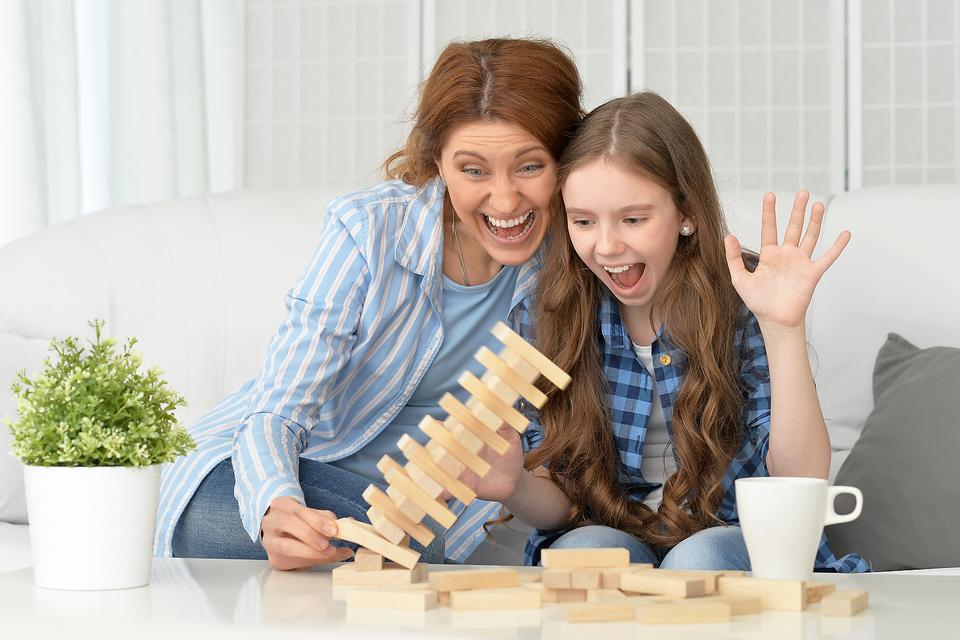 And if the child disobeys, conflict may occur. We want special playtime to be positive for the parent and the child.
And if the child disobeys, conflict may occur. We want special playtime to be positive for the parent and the child.
Limit criticisms during special playtime.
Criticisms show you do not approve of something your child is doing. Criticisms often include words like “No,” “Don’t,” “Stop,” “Quit,” and “Not.” For example, you might say to your child, who is using a blue crayon and describes it as purple: “That’s not blue. You are using a purple crayon.” Criticism can also be much more obvious: “That was a dumb thing to do” or “You sure sound ugly when you whine like that.” If children are criticized often, it can cause self-esteem problems. Criticism does not help to reduce problem behaviors. There are many times during the day when you need to use the words, “Stop,” “No,” and “Don’t.” This is okay. Avoiding these words during special playtime, helps you and your child have time to focus more on the positive.
Ignore minor misbehaviors during special playtime.
Ignore minor challenging behaviors like whining that happen during special playtime. If your child is doing something dangerous or destructive, stop the behavior immediately and use a consequence like distraction or removal of a privilege. Click here for information on Using Discipline and Consequences. Remember that giving attention after any behavior will cause that behavior to happen more often. When you limit the attention you give to your child after misbehaviors, you can decrease the chance it will happen again.
Top of Page
An age-by-age guide to playing with your kid
There’s a lot on a parent’s to-do list, and playing with your kid doesn’t always make it to the top. But play is important for your kid’s development, and getting down on their level to goof off for a few minutes can actually shave some of the stress off your day. It’s a win-win. We turned to parents and experts to discover the best ways to have fun with your kid, at every age.
How to play with your baby
The time you spend playing with your baby is the beginning of developing their self-esteem and self-worth, because somebody is following their lead and engaging with them and their world.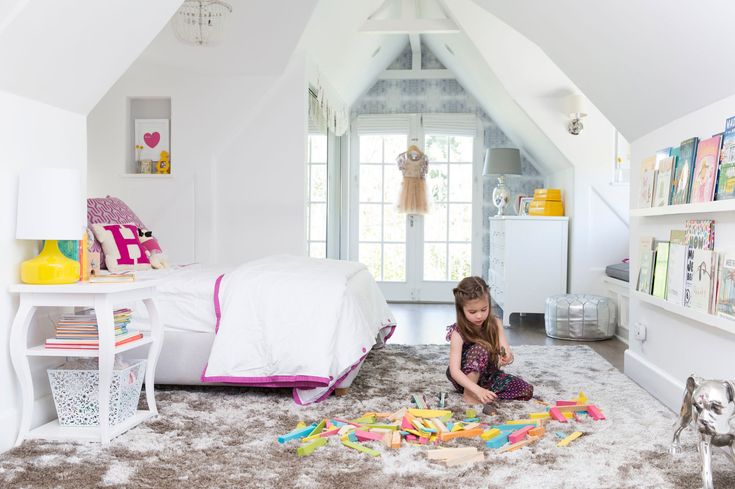
Keep it simple: The good news is, you don’t have to spend a lot of money buying fancy toys for your baby, because their favourite toy is you, says Karyn Positano, a child-life specialist and ECE at the Hospital for Sick Children in Toronto. To “play,” you really just need to respond to them, she says. “When infants babble, talk back. Give words to what they’re saying or what you think they might be thinking.” You can also label their emotions, which helps with early language acquisition.
Rev them up: When you’re engaging with your baby, give them enthusiastic feedback—a big smile or a clap—for their efforts. This will encourage them to remain focused, which helps develop and maintain optimal dopamine levels in their brain, setting them up to be resilient and interested in learning as they grow.
Time it right: Pay attention to your baby’s cues. They’ll give you signals when they want to play and when they’ve had enough, says Positano.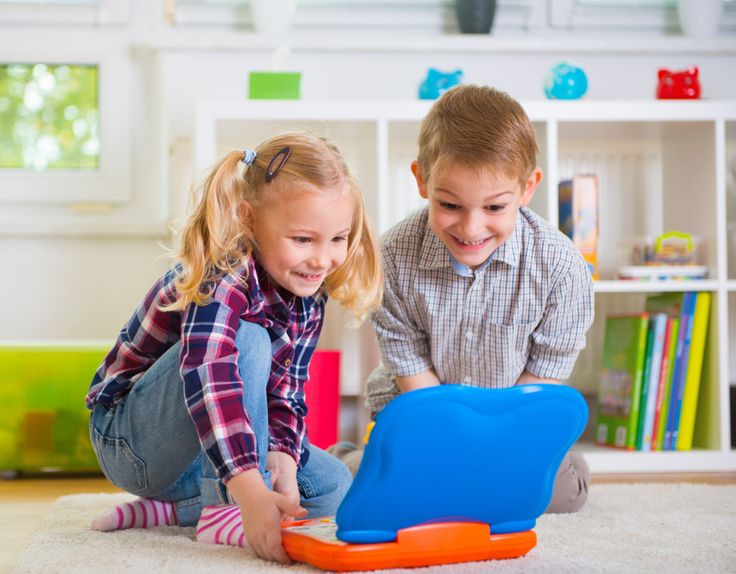 “You’ll know that an infant is ready to engage with you because suddenly they’ll be looking at you, and typically it’s after they’ve been fed or woken up after a nap,” she explains. They’ll also let you know when they are ready to move on from an activity by looking away or starting to get upset.
“You’ll know that an infant is ready to engage with you because suddenly they’ll be looking at you, and typically it’s after they’ve been fed or woken up after a nap,” she explains. They’ll also let you know when they are ready to move on from an activity by looking away or starting to get upset.
Touch and go: Finger games like Round and Round the Garden or interactive songs where you move your baby around while you sing (such as “Zoom, Zoom, Zoom, We’re Going to the Moon”) offer something called rhythmic movement stimulation, which is essential for teaching kids how to regulate their movements, says Hasmig Adjeleian, an occupational therapist who works with young kids at the Children’s Hospital of Eastern Ontario in Ottawa. Also a good idea: Get out the textured and crinkly books so they can explore a variety of textiles and surfaces. “With sensory play, they become sensitized to touching different things and feeling different things,” she explains. “This is soft, this is hard. This is fast, this is slow.”
This is fast, this is slow.”
Include them: Another way to incorporate sensory play is giving them items from around your home, like wooden spoons and metal pots and pans, to bang on while you strike a task off your to-do list. That’s what Liz Vlietstra used to do with her two kids. “Sometimes you can just sit there and quietly do something else, because they don’t always need you to be fully engaged with them, but they want you to be there and present and respond when they do something.”
Double tummy time: Your baby needs time on their belly to build their back and core strength, so you may as well use that time to engage with them in a fun way. “Get down to where they are and let them see your face and hear your voice,” recommends Positano. “Sing songs or have a board book on hand.” Some babies don’t like tummy time, and this will keep them interested in it for longer.
How to play with your toddler
Stay close by: At this age, kids are becoming more independent and starting to develop their own interests, but they definitely still need you close by. This is because independence often comes with frustration, and having a parent who stays calm and helps them label their emotions and work through them is important, explains Positano. They also love to show off any new skills to trusted adults.
This is because independence often comes with frustration, and having a parent who stays calm and helps them label their emotions and work through them is important, explains Positano. They also love to show off any new skills to trusted adults.
Puzzle them: Puzzles with large chunky pieces help develop motor skills and also help advance problem-solving abilities, explains Positano. Take turns putting in the pieces: You go first to show them how it’s done, then let them try without you jumping in—unless they get really frustrated. Connie Huson, a former kindergarten teacher who now works as a playroom consultant, also recommends building together with blocks or Duplo, which supports fine motor skill development.
Get up and go: If they’ve learned to walk, try activities like kicking a ball back and forth, which helps them develop new physical abilities but also offers other benefits. “They’re learning about taking turns and co-operation and early rules and negotiation,” says Positano.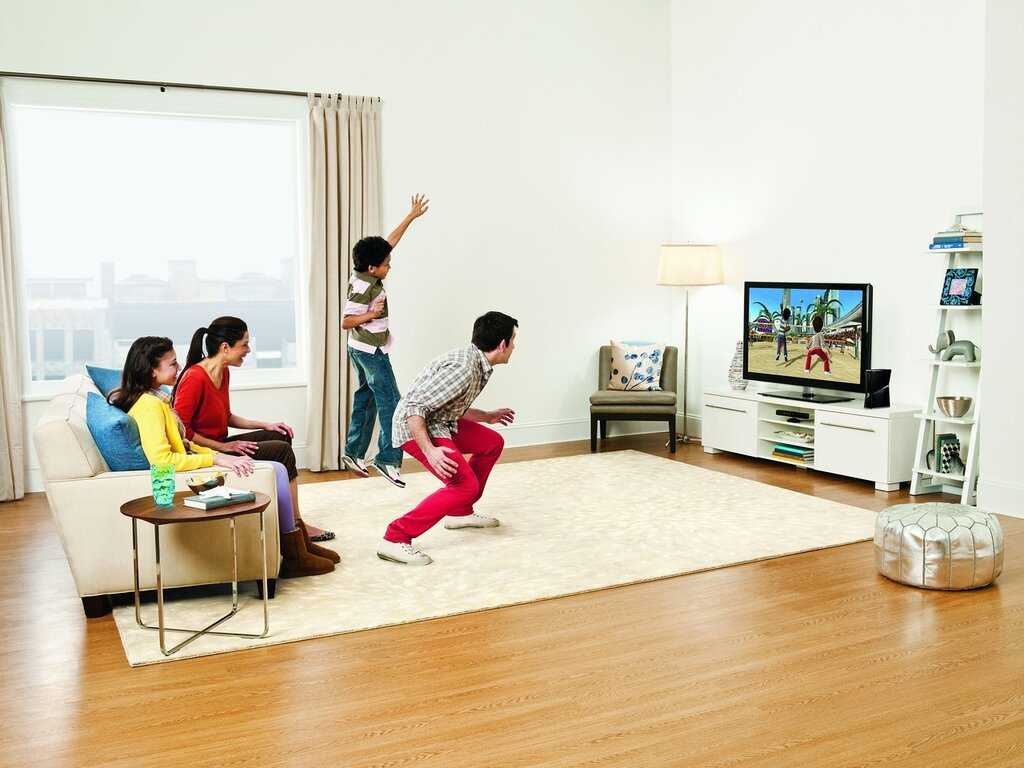 Gentle roughhousing (like flying them around like Superman) is a great way to bond with kids and work on relationship skills like consent. Or turn on some music and have a dance party in the living room.
Gentle roughhousing (like flying them around like Superman) is a great way to bond with kids and work on relationship skills like consent. Or turn on some music and have a dance party in the living room.
Level up: Now’s also the time to help them extend their play so that it’s a bit more complex, which will help them stick with their activity for longer. For example, suggests Vlietstra, if you’re at the park and your child is playing with a car in the sandbox. You could show them how to make a road for the car by dragging your foot in the sand. This type of interaction helps kids become curious and engaged learners.
Embrace your mini-me: Toddlers love to imitate you—so let them. If you’re gardening, give them some digging tools. Or set up a play kitchen in your own kitchen, so that when you’re cooking, they can play alongside you, suggests Lynne Newman, an occupational therapist and a mom of two girls, ages seven and nine.
Play Picasso: Grab some chubby crayons and coloured paper and trace their hands (and let them try to trace yours), then colour them in together.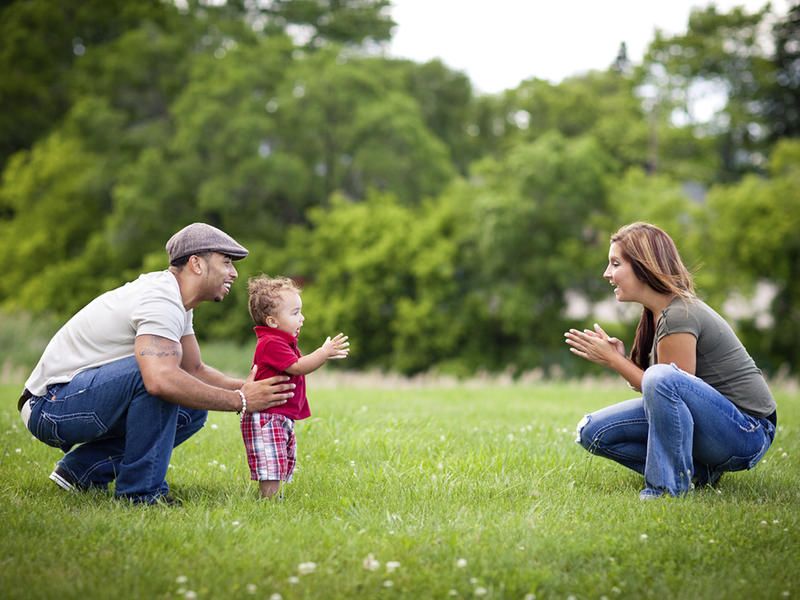 Or let them create a masterpiece and tell you all about it. Any type of drawing or colouring will strengthen their hands and develop their fine motor skills. Finger painting is fun too!
Or let them create a masterpiece and tell you all about it. Any type of drawing or colouring will strengthen their hands and develop their fine motor skills. Finger painting is fun too!
How to play with a preschooler
Imagination station: Kids this age love dressing up in costumes, pretending to be fantastical creatures or taking on roles like teacher or astronaut. This type of play really needs a partner, and your kid will love seeing you take on a new persona. (Tip: When playing doctor, always choose to be the patient—you get to lie down!) You can also use blocks to build structures for stuffies, dolls or cars together.
School prep: Who can resist smooshing things like playdough and kinetic sand with your fingers? It’s a great way to work on fine motor skills, which will help your kid when they begin handwriting. And this is a simple way for parents to de-stress, too—you can zone out a bit as you sit and roll out snakes or make pretend food for each other.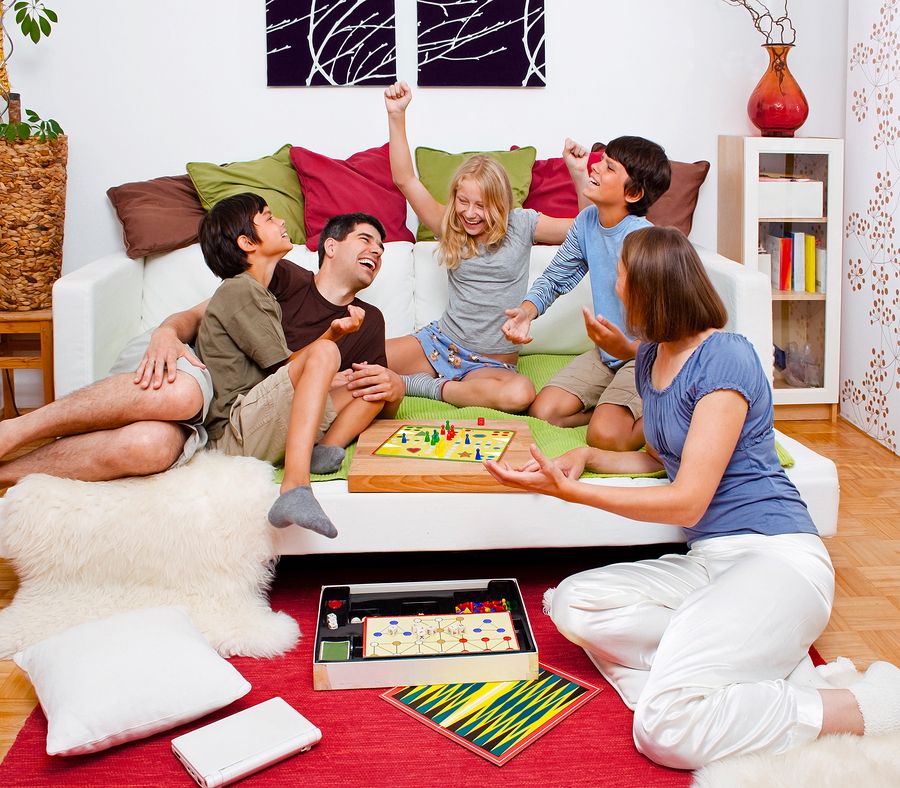
Put them to work: Preschoolers crave feeling like a valued part of the family, says Vlietstra. Get them to help you with household tasks like matching socks or washcloths. Making a game of it—perhaps by having a race to see who can fold their pile the fastest—is a great way to both teach them how to be a helper and to have fun.
Get on their level: Kids can get really into the things they like at this age, notes Vlietstra. “Learning the language of what they’re interested in—like the names of Paw Patrol characters—gives you something to talk about.” Like all people, young kids want us to take an interest in their lives.
Ready to rumble: Don’t be afraid to ramp up the roughhousing with preschoolers. “Play wrestling is really good from a sensory perspective and also from a social and emotional perspective, because it helps them let go of bottled-up feelings,” says Newman.
Let them lead: In imaginative play, let your preschooler take charge. This shows them you value their idea—but if they get stuck or ask for suggestions on what to do, it’s not wrong to give them two or three options.
This shows them you value their idea—but if they get stuck or ask for suggestions on what to do, it’s not wrong to give them two or three options.
How to play with your school-aged kid
Play by the rules: “Now that kids are in a school setting, where they need to learn rules, they become more fascinated by games with rules,” Positano explains. Pull out the cards or board games, or engage in a physical game, like tag.
Loosen up: Because kids are in a structured environment for most of the day, either in school or in extracurricular activities, playing with them using open-ended toys like LEGO®, dolls or Playmobil, where you build imaginative worlds together, lets them be free to explore their creativity, says Positano. Adjeleian also recommends a “body break” where you dance around the kitchen together or play a 10-minute indoor soccer game.
Game on!: If your kid is into video games, hanging out when they’re gaming, even for just a few minutes, still counts as playing as it gives you an opportunity to see what they’re doing, engage with them and show you care about what they enjoy. Vlietstra’s eldest is a Minecraft fan, so she’s taken the time to learn the basics of how the game works and chats with him about what he creates. “If he’s built an art museum in Minecraft, then it might be a moment for us to talk about art,” she says. You can also join in the fun.
Vlietstra’s eldest is a Minecraft fan, so she’s taken the time to learn the basics of how the game works and chats with him about what he creates. “If he’s built an art museum in Minecraft, then it might be a moment for us to talk about art,” she says. You can also join in the fun.
Play hard: Try skating, tobogganing, basketball, tennis or any other physical activity you enjoy. Don’t feel the need to go easy on them: Kids this age actually thrive on competition, and activities with a lot of sensory input are a great way for kids to focus their energy and then feel very calm and content afterwards.
Share your passions: As kids grow up, you can also start to share your hobbies with them, like baking, knitting or fixing cars, says Huson. While it’s important to follow their lead when it comes to their interests when they’re younger, as they grow up, getting them to try something that’s not necessarily their thing, but important to someone they love, builds healthy relationship skills, like being generous and considerate.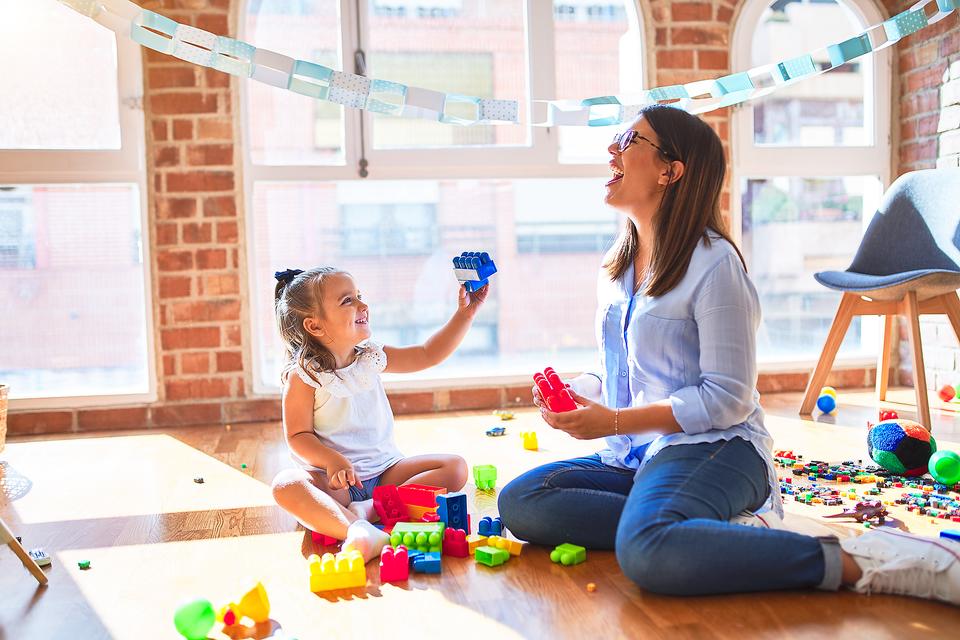 (Of course, if they end up hating it, don’t force them.)
(Of course, if they end up hating it, don’t force them.)
Don’t overdo it: Unstructured time at this age is essential, notes Huson, so try to make space in your kids’ schedule for it. “As adults, we are so excited when we have a weekend where we don’t have to do anything. We want to give our kids as much of that time as possible,” she says.
Stay in touch
Subscribe to Today's Parent's daily newsletter for our best parenting news, tips, essays and recipes.- Email*
- CAPTCHA
- Consent*
Yes, I would like to receive Today's Parent's newsletter. I understand I can unsubscribe at any time.**
FILED UNDER: age by age child development Indoor games Instagram LEGO1120 outdoor play Playing service seo
42 ideas for a great pastime
In the era of prosperity of technology, endless cartoons and the same endless feeds in social networks, both children and parents began to forget about simple communication, looking into each other's eyes, and not at the screen of a TV, tablet or smartphone. Think about how long it has been since you played with your child? Oddly enough, even the ideas for the simplest and once popular games have long been lost in memory and have undeservedly lost their relevance.
Think about how long it has been since you played with your child? Oddly enough, even the ideas for the simplest and once popular games have long been lost in memory and have undeservedly lost their relevance.
Games for children are not only a great way to spend time with the family, but also an opportunity to develop thinking, memory, logic, reaction speed. We have collected the best children's games that will captivate the whole family and give a charge of vivacity and positive for a long time. nine0003
Contents:
- Children's play at home
- Entertainment games for children at home: types
- Active games
- Sports games
- Competitions
- Development games
- Speech games
- Construction of houses
- Math games
- Interesting games for two children
- Role-playing games
- Unusual home games
- Music games
- Water games
- Interesting games
- Advice to parents
Children's games at home
Entertaining games for children have many advantages: they bring together all family members who take part in the process, allow you to spend time rich and exciting, without gadgets and TV. The game is a powerful tool for the development of your child. When planning to spend time together blowing dust off a box of checkers or a long-forgotten Monopoly, keep a few things in mind:
The game is a powerful tool for the development of your child. When planning to spend time together blowing dust off a box of checkers or a long-forgotten Monopoly, keep a few things in mind:
- Try not to prompt your child. Make an exception to the rule only if he does not yet know the rules. Let them learn to make mistakes and draw conclusions. Undoubtedly, you know more, but let the baby be independent.
- Do not give in, you must be equal. Therefore, it is worth choosing interesting games for children, where the process does not require encyclopedic knowledge or vast experience, and the rules are simple and understandable for everyone. nine0009 You need to play only with pleasure, getting pleasant emotions. If you notice that the children don’t like the game or they get bored, it’s better to switch to another one: it’s definitely not worth forcing anyone to have fun.
Entertainment games for children at home: types
What kind of games are there in a confined space? When thinking of entertainment, consider the possibilities of an apartment or house and the age of the child. Excessive noise should not be raised late in the evening, and too primitive games are unlikely to be appreciated by a senior student. Therefore, alternate, experiment, and you will definitely select exactly those family games that will captivate everyone, and just spend time with children without a computer. nine0003
Excessive noise should not be raised late in the evening, and too primitive games are unlikely to be appreciated by a senior student. Therefore, alternate, experiment, and you will definitely select exactly those family games that will captivate everyone, and just spend time with children without a computer. nine0003
Active games
1. Let's go!
Have your child pretend to be a car driving down a dark road. To do this, put a few chairs or other objects, give the child a steering wheel or its round substitute, and blindfold. You are a navigator, a kid is a car, turn on and go! Try switching places so that the child also tries himself as a helper.
Suitable for age: 5-8 years old.
2. Hold the balloon
This kids game will require a balloon and some skill. Task: move the ball from one end of the room / corridor to the other without touching it with your hands and without letting it fall. Let the children be smart: you can blow on the ball, push it with your nose, chin, knees.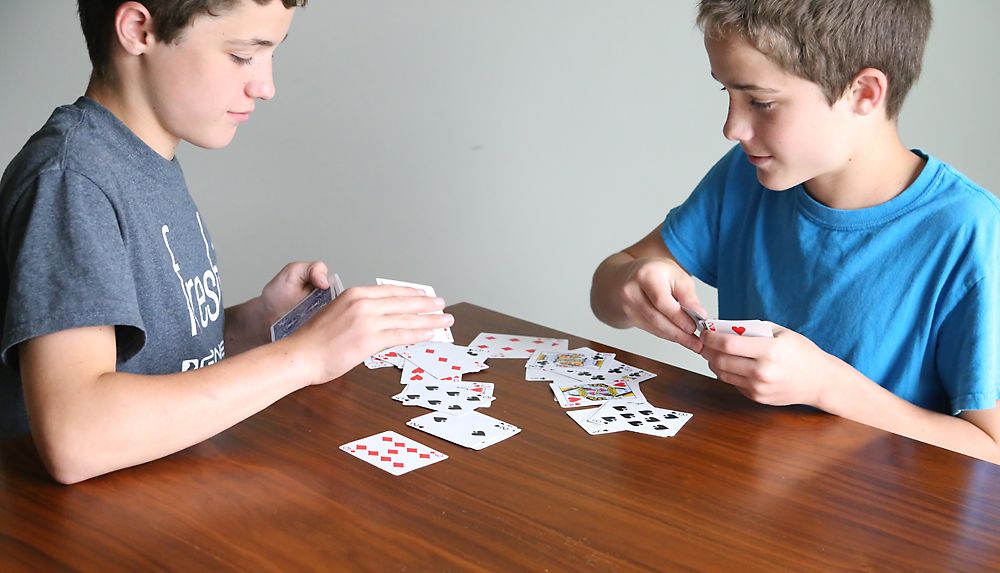
If there are two children, arrange a competition: who will bring the ball to the finish line faster. For older participants, the task can be made more difficult by building a path or placing small obstacles to get around. nine0003
Suitable for age: 5-15 years old.
3. Cross the river
Ropes, ribbons or two pieces of rope, laid out at a distance of one and a half to two meters from each other, can play the role of the banks. From paper, cut out circles that will replace the pebbles.
Invite the child to "get over" from one bank to another, stepping over the stones without "wetting" the legs. The game is simple, but perfectly develops coordination of movements in children 3-5 years old.
nine0002 Suitable for age: 3-5 years old.
4. "Brilliant" basketball
In the conditions of an apartment, entertaining games for children with a ball are not very convenient, but if you replace it with small foil balls, and build a basket from a children's bucket or a cut-off five-liter bottle, you get quite a decent basketball.
The competition can be made more difficult: throw in turn with the left and right hand, count who will have more hits per minute, vary the distance from the player to the basket. nine0003
Suitable for age: 5-13 years old.
5. Classics
The good old "jumping" is definitely worth remembering and arranging a game even within an apartment or house. With construction tape on the carpet, “draw” a classic, a round candy box can be used as a “bit”. The main thing is to remember the neighbors below and try not to disturb their peace in the evening.
Suitable for age: 5-10 years old.
nine00756. The fastest turtle
Turning into a turtle is easy! Get on all fours, put a pillow on your back and go to the finish line, so that your "shell" is not lost along the way. You can arrange a competition "Who is faster?" or which of the "turtles" will show the best time.
Suitable for age: 4-7 years old.

7. Insidious ball
Throwing the ball within the apartment is not the safest activity, so you can think of other activities with it. Lie on your stomach opposite each other, put the ball between your heads. Try to stand up while holding the ball with two hands, without the help of hands. nine0003
Another option would be to compete, in which case two balls would be required. Get on all fours and, on command, start rolling the ball, touching it with your forehead or nose, without helping with your hands. Whoever crosses the finish line the fastest wins.
Suitable for age: 5-10 years old.
Sports games
It is possible to entertain children at home with games not only for the purpose of entertainment. Motor activity is necessary, especially for a fidget baby. Come up with stories, remember your favorite animals or fairy-tale characters, accompanying interesting stories with movements as the story progresses.
The child will be happy to imitate a bear, jump like a monkey or stretch his neck like a hissing goose. Mobile children's games will allow you to spend all the extra energy that the baby has accumulated, directing it in the right and useful direction. nine0003
8. Jumper
Hang balloons from the ceiling at such a distance that the child can reach them only by jumping. Pre-fill them with foam balls, large confetti or other light fillers.
The child's task is to jump up, hitting the ball with his hand, and reach it. You can diversify the game by taking multi-colored balls and placing them at different heights, and then, naming the color, ask them to jump to each of them.
Suitable for age: 3-5 years old.
9. Gulliver and the Lilliputians
This activity is suitable for a group of children. Ask them to stand in a circle and tell them that everyone can imagine themselves both very small and very large, the main thing is to be attentive.

At the command of "Lilliputs!" (as an option for children: dwarfs, kids) children should sit down, at the command “Gulliver!” (or "Giants") - stand up. The most attentive wins the game.
nine0002 Suitable for age: 4-5 years old.10. Take off the feathers
The following game will help you run and practice your agility. Divide the children into two teams. One attach several clothespins to clothes. The task is to get rid of the “feathers” by attaching them to the clothes of the second team members. The one who first removes all the "feathers" from himself will win.
Suitable for age: 6-7 years old.
11. Who is faster?
If you need to keep the children company at home, offer them something like a small relay race. From the options for passing the distance, use:
- squatting;
- walking around the room with a balloon without touching it with your hands;
- walking with a bag of beans (or a book) on the head;
- jogging over obstacles (for example, without stepping on spread out pillows or, conversely, jogging on sheets of paper), etc.
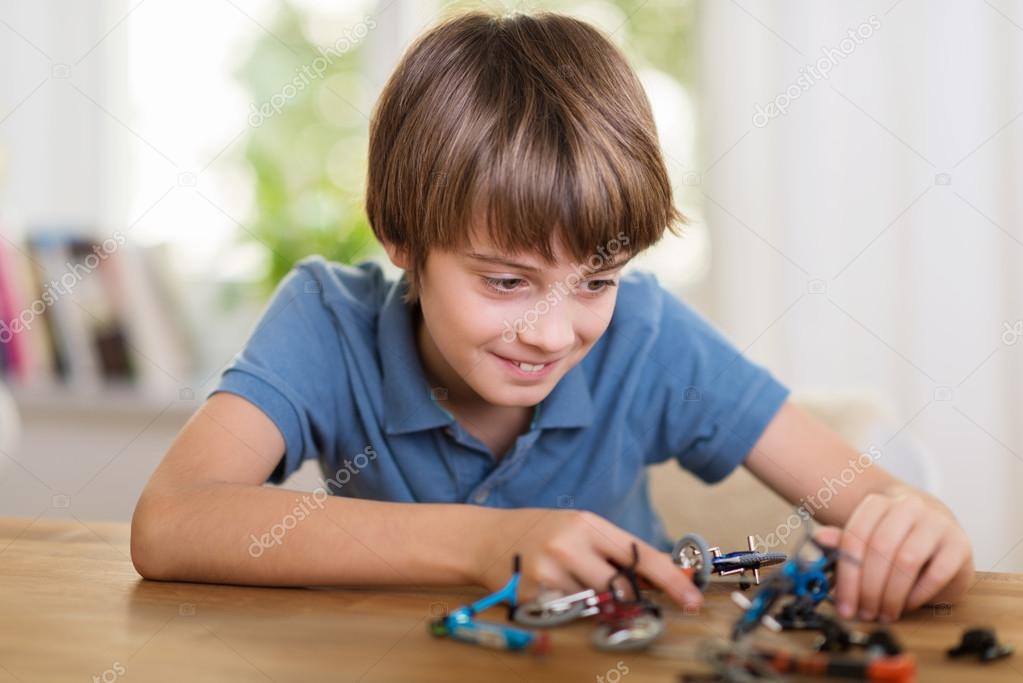
Suitable for age: 5-10 years old.
Competitions
Sedentary children's games will also help you out in a situation when children need something to keep them busy, especially since the place or time may not allow active movement. Such an activity requires, albeit minimal, but preparation. And it, as you know, is no less interesting than the process of the game itself. nine0003
12. Quiz
Invite the child to be the leader and prepare a competition, say, for a family dinner or tea party when the whole family gathers at the table.
Tell me what questions or riddles to choose, prepare prizes for correct answers, choose the winner, dilute the script with a musical break, turning on karaoke or dance music.
Such quizzes can eventually become thematic and turn into a good family tradition.
Suitable for age: 7-13 years old.
13. Answer within a minute
Prepare a list of simple questions and organize games for the children at home if you have two or more of them.
Offer to try to give as many correct answers to the questions as possible in a minute.
In this way you will train the speed of thinking and the speed of reaction. Select questions from the area of general knowledge or on topics that children know well, as well as in accordance with age. nine0003
Suitable for age: 7-15 years old.
Family games for development
Entertaining games can be organized with children at home, using the simplest objects. Thus, you will develop logic, thinking and help your child explore the world. Do not forget that during the game the child learns.
14. Magic Pencils
Colored pencils or felt-tip pens are needed to play. You will repeat the colors and work on the development of observation and imagination in the baby. nine0003
Explain that pencils sometimes come to life and can daydream, imagining themselves as other objects. The red one said that he was a strawberry, the green one - a maple leaf, the yellow one introduced himself as the sun.

Invite your child to "voice" different colors of crayons by naming the corresponding objects.
Suitable for age: 4-5 years old.
15. Touch!
Another way to repeat or study colors is this game. The child needs to touch the object of the color that you name. nine0003
You can play within the same room, or you can complicate the task and look for a suitable color throughout the apartment. As an option, to train your memory, at the end of the search, ask the child to name the items that he found.
Suitable for age: 4-7 years old.
16. Draw a story
Making up stories is a favorite pastime for many children. But it can be diversified by inviting the baby to draw everything that you are talking about. nine0003
A variant of this story: “There was a big house on a green meadow. It had blue walls, a red roof, and gray smoke coming from a black chimney. The yellow sun smiled at the blue sky and blue clouds.
Red flowers grew around the house and multi-colored butterflies fluttered.
You can continue the story, add characters and objects, giving them a description. If the child likes this activity, roles can be reversed. Try to draw on paper everything that your creative child will come up with!
Suitable for age: 4-7 years old.
17. Attention to the picture
Children's favorite books usually contain a large number of pictures. For this game, drawings are suitable, which depict many different objects. You say, “I see something red in this picture. It does not know how to speak (as an option - to walk, ride, no pens, etc.).” The task of the child is to guess the object. Roles can be reversed.
Suitable for age: 4-5 years old. nine0003
18. Memory
Game ideas surround you even within the same room, so that with children at home you can develop any thought process even with the help of ordinary toys.
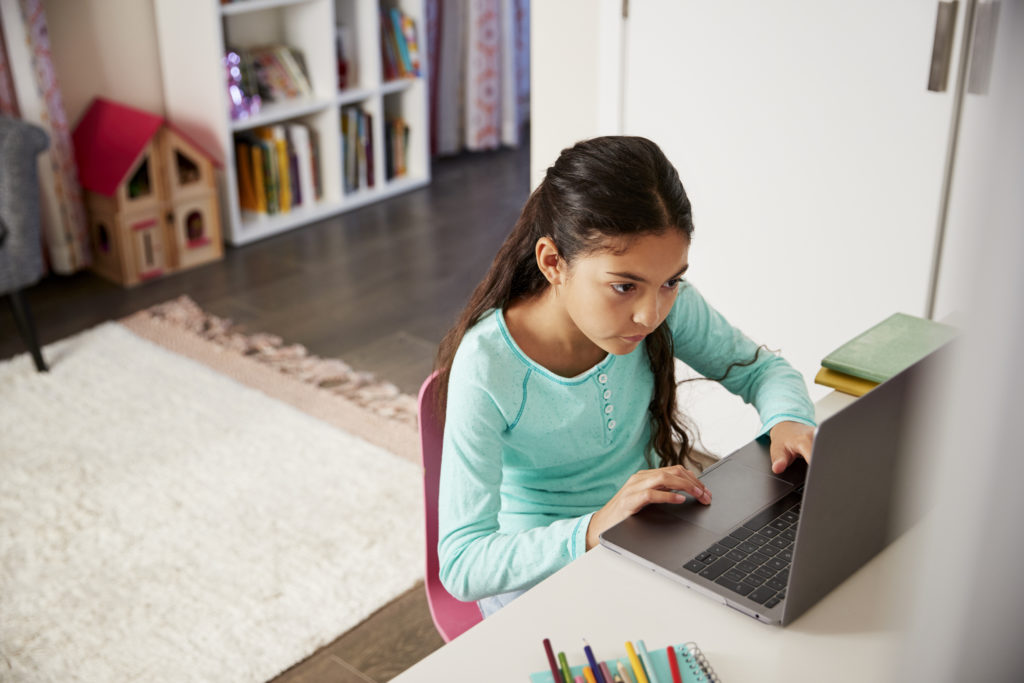
Take a few objects (doll, soft toy, ball, cube, etc.) and arrange them randomly. Ask the child to remember what toys he saw and look away.
Swap them or take one and ask what has changed. Tasks can be complicated when the baby has a little practice. nine0003
Suitable for age: 4-7 years old.
19. Didactic games
Suitable for studying mathematical and geometric concepts, natural phenomena and the world around. With the help of pictures cut out from old magazines or printed on a printer, you can help baby animals find their mother (for example, make pairs of chicken-chicken, sheep-lamb, etc.).
Geometric shapes cut out of colored paper will help you repeat colors and practice counting, while circles cut into segments will introduce you to the parts of the whole. nine0003
The process of preparing such material will be no less interesting and creative than the lessons themselves.
Suitable for age: 4-8 years old.
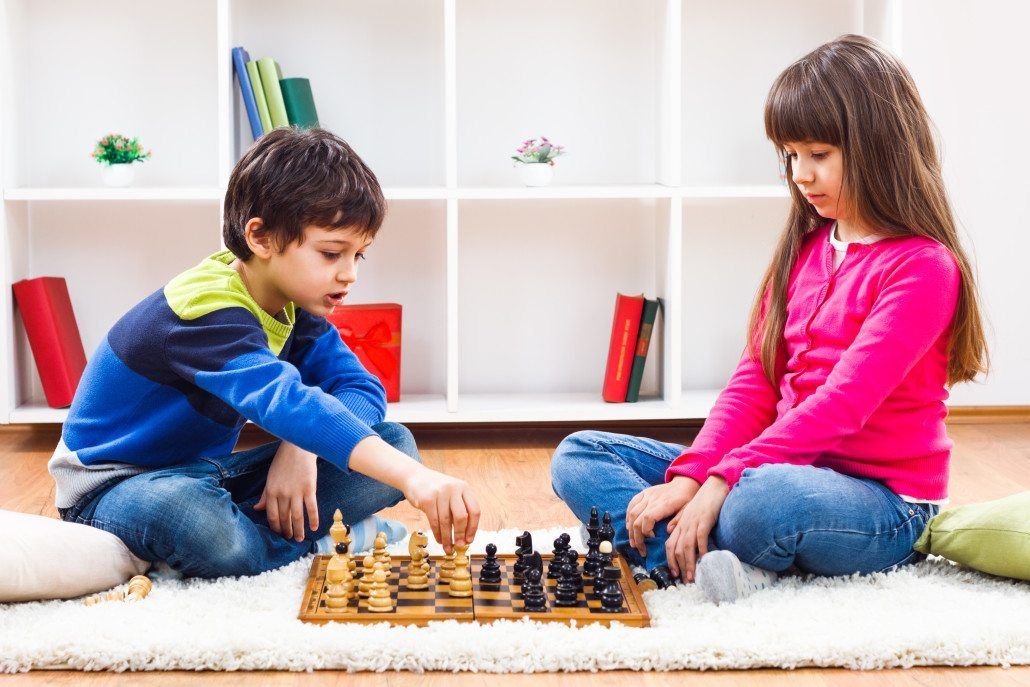
Speech games
The development of speech is an important and necessary process. Talk to your child on the way home, in the car, look at the pictures together. Cognitive games can be organized at home with children and in a simple conversation, the main thing is to show a little imagination.
20. Write a story
Some children's games are aimed at the development of imagination, and they should not be neglected. And to begin with, try to come up with a story that will be based on just two words. At the same time, they do not have to be combined in meaning. For example, ask one word from your dad (mother), the second - from your sister (brother). Look what a funny story you can make!
Suitable for age: 5-8 years old.
21. Who and what
By asking simple questions, this game can be played both with a child and with a group of children. Tasks can be as follows:
- Who (what) is swimming?
- Who (what) walks?
- Who's talking?
- What can you eat?
- What can be cooked?
- Who (what) can fly? Etc.
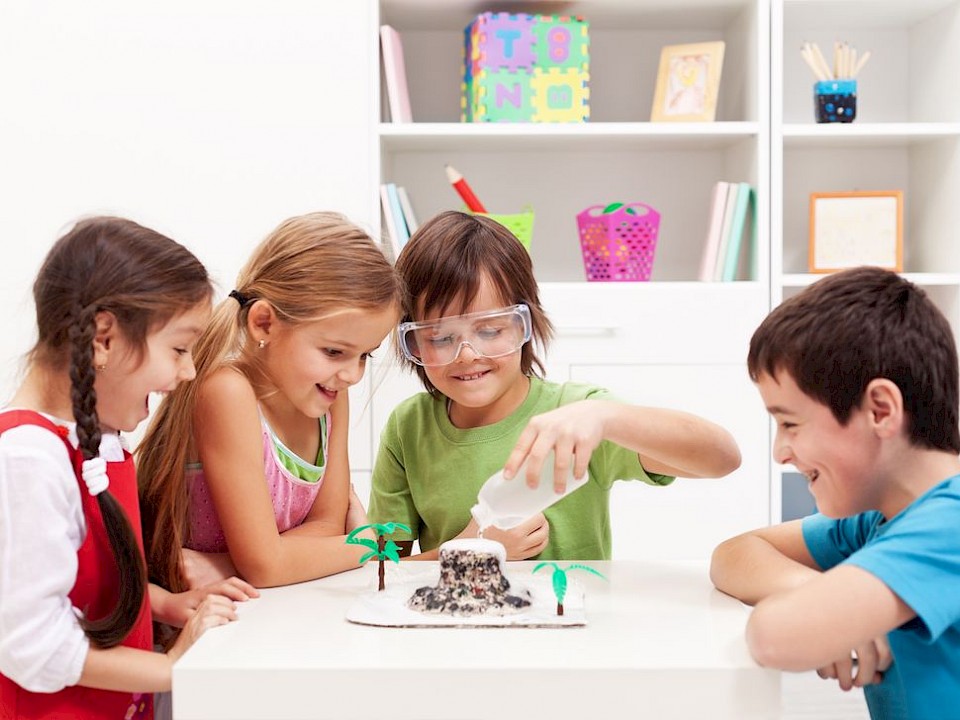
There should be as many answers as possible. If there are many participants, there will be a competition.
Suitable for age: 5-7 years old.
Construction of houses
Needless to say, how children love to build things? Moreover, it does not matter at all whether it is an expensive designer, wooden blocks left after repair, shoe boxes or an umbrella and a blanket - the process is always captivating. nine0003
Although, as practice shows, unnecessary boxes or a covered chair usually win in terms of popularity.
- A selection of hotels for families
22. Constructors
In any home there are small Lego parts or a box with wooden towers, arches and blocks of different sizes.
Offer a bored child to build a home for his favorite toy: a little man, a doll, a bear, etc. you can go beyond walls and build simple furniture and celebrate the move. nine0003
Suitable for age: 5-8 years old.
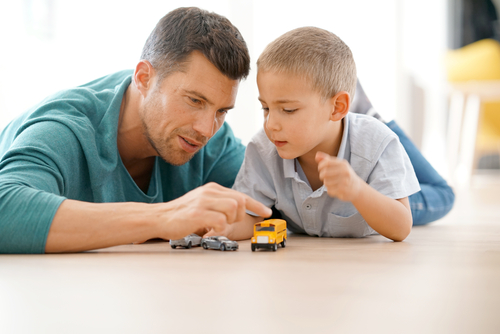
23. Cardboard boxes
It happens that shoe boxes have accumulated or a large package of household appliances has appeared. Then the house can be built for dolls (for boys - a garage or parking lot) or for a baby.
Such structures can be pasted over, decorated, filled with furniture - in general, playing with them will captivate young architects and designers for more than one day.
Suitable for age: 6-10 years old. nine0003
24. Armchairs, blankets and umbrellas
The good old version of “housing”, inexplicably of interest to all generations of children without exception. A bedspread or a blanket can be put on the table, fixed with books, two chairs can be covered with it, or something similar can be built using an ordinary umbrella.
Fantasy begins to manifest itself instantly, and sofa cushions, blankets and other improvised means are used. True, after such a game you will have to spend some time cleaning.

Suitable for age: 4-8 years old.
Math games
Don't you think that mathematics is a boring science? Wrong opinion. Usually children like to count, add and subtract, play with geometric shapes. The main thing is to interest them and not turn the game into a long annoying task.
- Best resorts for families with children
25. Mathematics in the kitchen
Setting the table is a great way for your little one to practice counting. Ask him to put two forks on the table, bring three cups, take five apples from the basket, or put four cookies on the plate.
Get creative with addition and subtraction using teaspoons, large pasta, or other household tools.
Suitable for age: 4-6 years old.
26. Tasty Numbers
Bake number cookies together. Prepare the dough, let the child roll out the sausages, and you help to add them in the form of numbers.
nine0003
You can play with them, build pyramids, stack them up and down, and even make simple examples. It's not scary if a couple of signs suddenly disappear imperceptibly - after all, this is a cookie.
Alternatively, math pastries can also be made inedible. Blind such numbers from salt dough, dry and decorate them, and then open them with varnish. Spreading examples from this counting material will be especially nice.
Suitable for age: 4-6 years old. nine0003
27. Math ball
The ball can be played even within the same room without damaging neighbors or surrounding furniture. Repeat verbal counting with your child.
When throwing the ball to him, name an example, and he, throwing the ball to you, must say the answer. Depending on age, you can take numbers from the first ten, second or three-digit. The main thing is to have time to count yourself in order to check the correctness of the answer.
The variant of the ball game can be like this.
When throwing the ball to a child, name the number, and in response he must name adjacent numbers (5 more, 10 less, half as much, etc., depending on age and knowledge). nine0003
Suitable for age: 5-8 years old.
Interesting games for two children
Children often only need to be prompted to play, and they will perfectly play with each other, mostly without paying attention to the difference in age.
Calm games at home can be very different, the main thing is that they are interesting for children.
28. Wonder Beast
All you need is a piece of paper and a pen. The first player draws a head and folds the sheet so that only the neck is visible. nine0003
The second one completes the torso, then again the first one draws the legs (paws, flippers, etc.). Expanding the "picture", the children will see a rather funny creature that you can think of a name for.
Suitable for age: 6-10 years old.

29. Funny stories
A similar activity can be a variant of the game on paper, when children need to play with each other or with adults. The first participant must write two lines from a song, a poem or just two sentences related in meaning, and wrap a sheet of paper, leaving only the last phrase. nine0003
The next one writes two of his own lines, connecting them in meaning with the previous phrase, and again wraps the sheet. As a result, the bundle will hide a very curious and, most likely, funny story.
Suitable for age: 8-14 years old.
Role-playing games
Children's games, in which children pretend to be adults, are perhaps the most favorite.
From an early age, a child begins to imitate his parents: lovingly puts his favorite toys to bed, builds a garage, cooks food on a toy stove, or builds a semblance of a real store. Play along with the child or switch roles with him, allowing him to become a mom, dad, salesman or doctor.
nine0003
30. Shop
There are several variants of this game. You can lay out items on the "counter", set "price tags" and make "money" from cut sheets of paper of different sizes, thereby repeating the count.
Or you can ask the child not to name the product he wants to buy, but only to give him a description. So the game will become a small lesson in the development of speech.
Suitable for age: 4-6 years old.
31. Beauty salon
A role-playing game that captivates absolutely all girls. You can become a model for your child to do hair, make-up, and manicures.
But a doll can also act as a “client” of the salon. At the same time, be sure to discuss the rules of conduct and the culture of communication in the salon.
Suitable for age: 5-7 years old.
32. Construction site
You can organize the activities of both the driver and the builder at the same time by showing your son that a big car can be loaded with blocks, help it get to the construction site, unload the “material” and start building a garage or house.
nine0003
You can also include a crane, "worker" figures and build more than one object.
Suitable for age: 4-6 years old.
33. Playing Pirates
Build a ship from improvised means, and look for costume parts in the closet - the preparation process will be no less interesting.
Then, armed with binoculars, you can go in search of treasures to uncharted shores. Alternatively, a small toy man can become a pirate, and a ship can be built from a designer. Depends on what the child likes more. nine0003
Suitable for age: 5-8 years old.
Unusual home games
Family games at home can become a good tradition that will give your children a lot of warm memories in adulthood. In the meantime, they are still small, a little imagination, effort and time will help organize fun games and occupy the leisure of the whole family. Get actively involved in the preparation, do not be lazy, think of what you can play, and you will not notice how you will get carried away yourself.
nine0003
34. Fantastic patterns
Mix 5 tablespoons of gouache, one of shampoo (dishwashing liquid) and a teaspoon of water. Make a thick foam in the container by blowing into a plastic tube.
Now lightly touch the colored bubbles with a piece of paper. See how the prints turn out, and paint an abstract picture, following your imagination.
Suitable for age: 5-12 years old.
35. Cheerful quest
This activity can be prepared for a birthday or for a group of friends, or you can just please your child with an exciting activity. And if the treasure hunter is interested in the search process, then, believe me, the preparation process will be no less fascinated. nine0003
Hide a small gift or sweet prize (there may be more than one) at home and write step-by-step instructions on how to find it.
You can place notes with clues in the most unusual places, the main thing is that each previous one should be the key to finding the next one and eventually lead to the main “treasure”.
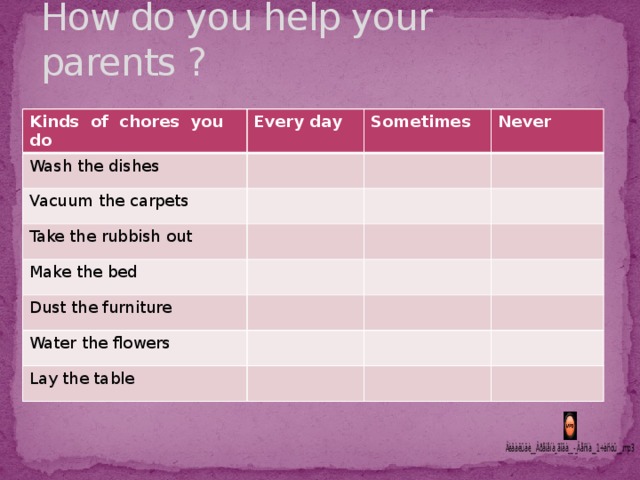
Suitable for age: 6-12 years old.
Music games
Every child has favorite songs, regardless of age. You can just dance, learn new moves or prepare a dance as a gift. nine0003
Joint games of children at home unite, and music will help recharge with positive and good mood.
36. Leg, leg!
Have you ever danced with your neck? What about a nose or a finger? Well, there is a great opportunity to try! Turn on your favorite tune and start with simple movements.
Ask the children to dance with only their hands or only their feet. Then move on to more difficult tasks: dance only with your elbow or finger. And don't forget: you, too, must be actively involved in the game. nine0003
37. Get rid of the balls
For this game you will need a low stretched volleyball net. But as an option, any dividing line in the house is also suitable. Inflate 6 - 10 balloons, depending on the number of players.

The task of two teams (they can have from 1 to 3-4 participants), having received the balls equally, transfer them to the opponent's side.
The game starts when the music is turned on and stops when the music is turned off. Whichever side has fewer balls at that moment wins. nine0003
Water games
Children love to splash in the water, bathe and pour water from container to container.
If you decide to use water as a play area, be prepared for the environment to be wet and your baby's clothes and shoes to become damp. Therefore, be prepared for the fact that at the end of the game you will need to completely change your clothes.
- Best Family Fun
38. Catch, fish!
Prepare a bowl or bowl of water, take a few small items and put them directly into the water. These can be balls, small figures, chestnuts, etc. nine0003
Invite the child to catch the “fish” with his hands, a spoon, a small net (a small kitchen sieve can act as this), and then carefully place them in a nearby container.
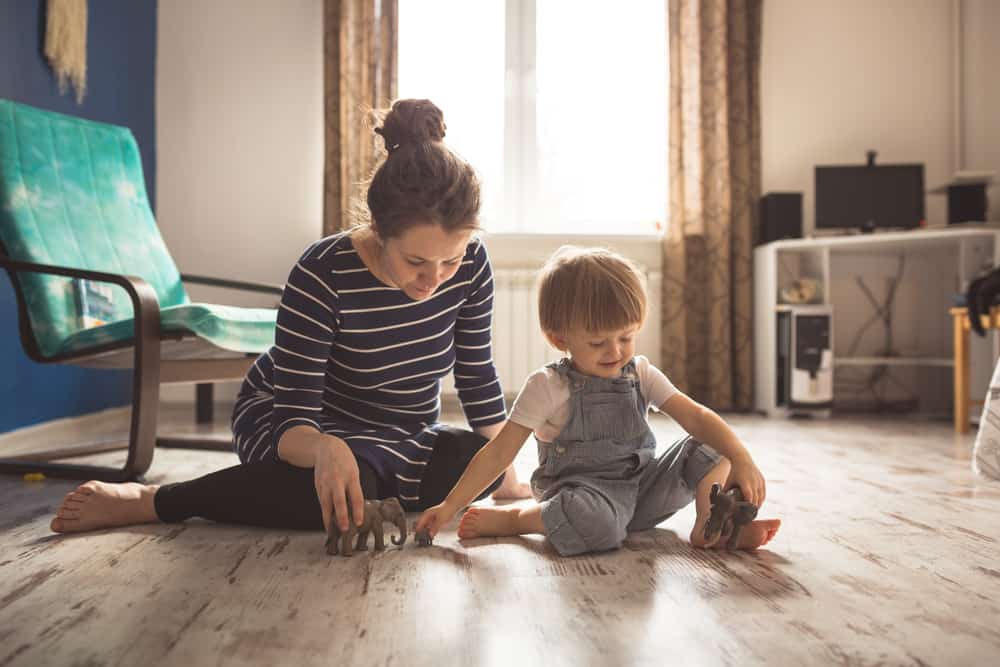
Suitable for age: 3-5 years old.
39. SpongeBob
Tell your child that a sponge can absorb water and show how it works.
Prepare two containers, fill one of them with water. Try transferring water from one container to another with a sponge, filling it up and then squeezing it out. nine0003
Suitable for age: 3-4 years.
40. Catch the ball!
When your baby goes for a bath, drop about ten lightly inflated balloons into the bath with him.
They will funny jump out from under the water, float like boats if you blow on them, and will be a wonderful field for experiments of a little researcher.
Suitable for age: 3-5 years old.
Interesting games
What other games are there for children at home? Choose according to the mood and preference of the child.
They can be active or calm, with a lot of additional materials or in the form of a conversation, but in any case they should be interesting to the child.
As practice shows, games without a phone can also captivate and interest a child.
41. Guess what it is
We explore the world around us with the help of the senses, and touch plays an important role in this. Therefore, it will be useful for a child to mentally create images of things without seeing them, but only by touching them. nine0003
Place several objects in a basket or container out of sight, then give one to each child's hands while blindfolded (or simply cover them).
Let the baby try to guess what he is holding in his hands, examining the object only with his fingers. Tell me if the child is not coping.
Suitable for age: 4-7 years old.
42. Unusual book
Games and activities with children at home can be remembered not only as an interesting pastime with parents, but also as an interesting craft that has been preserved for many years. You can make a book with your child about himself.
nine0003
Collect photographs, magazine clippings, interesting small items. They can be glued onto thick sheets of paper and write a story together.
Have your child write the first letter in this book, make the first drawing, circle their pen, or paste a picture they like. After many years, such a craft will evoke very fond memories.
Alternatively, you can make a fairy tale book by inventing a story and decorating it with applications and drawings. The process will take more than one evening and, most likely, will interest the child for a long time. nine0003
Suitable for age: 4-10 years old.
Advice to parents
When spending time with your child, do not be afraid to show your imagination, use any household items for play, talk about the world around you, let the baby try on different roles, dance, jump, get his hands dirty in paint or wet clothes with water. So he learns the world, develops and grows.

Remember that your participation in the gameplay is important, but only as a partner, less so as a mentor. nine0003
Take a break from everyday activities, spend more time making cookies or cleaning, but do it together with your child while playing.
- Things to do with kids at home: 35 fun ideas for fun
A wise Polish proverb says: "You have a whole life to work, and children will be small only once." Use this time as much as possible, and the useful habit of seeing a friend in a parent will remain forever. nine0003
We hope that our advice will be useful to you in organizing your leisure time, and you will always find something to captivate your child at home.
What to play with your child at home: 10 simple and fun options - Parents.ru additional material or inventory.
Outdoor games always, at all times and among all peoples, remain in first place in the ranking of the best games from the point of view of the child himself.
What to do - children love to rage! But it can also be done well. Very useful for adults too, because extra physical exercise will not hurt anyone. We recommend airing out the room and wearing as light clothing as possible before playing outdoor games. And, of course, be careful! nine0003
Sofa wrestling
Can be done on carpet or other soft surfaces. Two people can play - an adult and a child or an adult and two children. The goal is the same as in many types of wrestling: to put the enemy on the shoulder blades. Of course, the children will have to succumb (but not when there are two of them!), but, believe me, all the participants will have a crazy joy from the process, with any result, it will always be over the edge.
Cheerful brawl
This is also a kind of fight, but with objects. Various items are suitable for her: pillows, soft balls, rugs. Pillows, as everyone knows, can be both thrown and fought. Balls - to throw, and rugs, turning them into an arc, fencing.
Since such games can be traumatic, it is wise not to leave children alone, but to participate together. nine0003
- Photo
- RoBeDeRo/Getty Images/E+
Acrobatic studies
small, probably almost all. Reminder if anyone forgot. Play on a soft surface. The adult lies on his back, bends his knees, gives his hands to the child, and he climbs onto his knees with his feet. What to do next depends on your imagination and physical fitness. Families with two children of different ages are known, where two were perched on top of the father at once. Another well-known option, getting down on one knee, put the child on the other and, supporting him, help to make a swallow. Or - for the most risky and strong, generally put the baby on your shoulders. The game is good because children and adults of different ages and different physical fitness can participate.
But there must be at least one strong participant. And also, the result can be shown, for example, to a mother who did not participate, earning applause. nine0003
Obstacle course
A game for children who can already run and jump a little. It’s not bad, of course, for her to have a more spacious apartment ... First, the space is cleared (it is possible on the territory of the entire apartment, including the corridor, but without closed spaces): all fragile objects are hidden or moved to the walls. “Obstacles” are placed: overturned chairs, stools, tables, armchairs, etc. This is followed by a race for the participant, who is given a small head start. Obstacles must be climbed over (or jumped over), it is impossible to bypass. Attention! The game can be traumatic, both for the players and for the environment. nine0003
Intellectual
Unlike outdoor games, here players need ingenuity, attentiveness and sometimes patience. You can play both together and with a larger group.
Physical strength in these games is not required, so they can diversify leisure time during a cold, for example.
- Photo
- Getty Images/Brand X
Find an object
It's hard to find a person who is not familiar with the rules of this game, which is not losing popularity, but still ... Play from two to several people. The host hides the object in the room or throughout the apartment, while others turn away. Then everyone is looking for an object, focusing on the prompts of the presenter: "cold - hot." Another version of the game. The host hides several identical items throughout the apartment. Next to the subject is a note, with a landmark search next. Suitable for older children. In some families, it happens that they draw whole cards, on Saturday dad hides, on Sunday mom and child are looking for. nine0003
How much and what kind?
Good for both the smallest and younger students.
You need to invite the baby to name all the things, for example, red, that are in the room or in the house. Or - for older children - all triangular, round, square. If the child knows how to count, you can offer to find him 5 red things, 6 round and 2 in a box.
Divide your bread
Play, besides pleasure (and a feeling of some satiety), teaches the child generosity. And prudence! To play, you need a piece of bread, a candy, a cake, an apple, or something like that. Two people play, taking turns biting off a piece. Whoever gets the last piece loses. So the last bites have to be carefully calculated so that the comrade has more left. nine0003
What is missing?
You can play with multiple players. You will need several different and small items. For example: apple, pencil, ball, spoon, cube. The child must name all the objects and remembering them, close his eyes. An adult needs to hide one of the items. And, when the baby opens his eyes, ask him to remember what was missing from the table.
